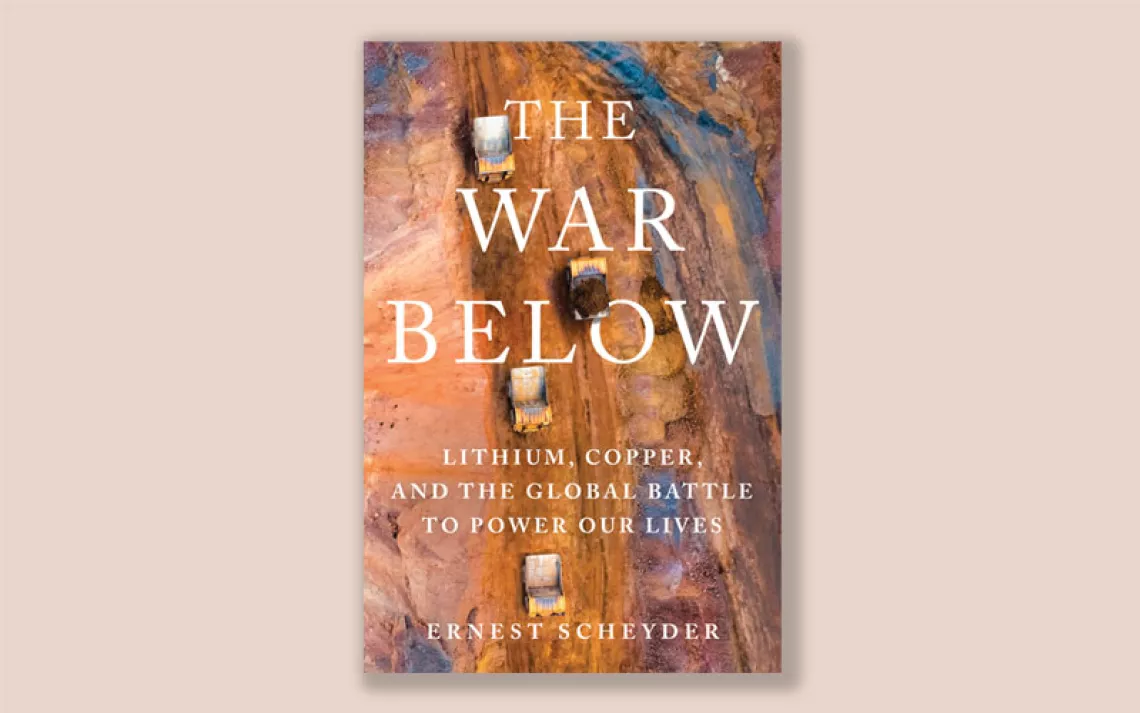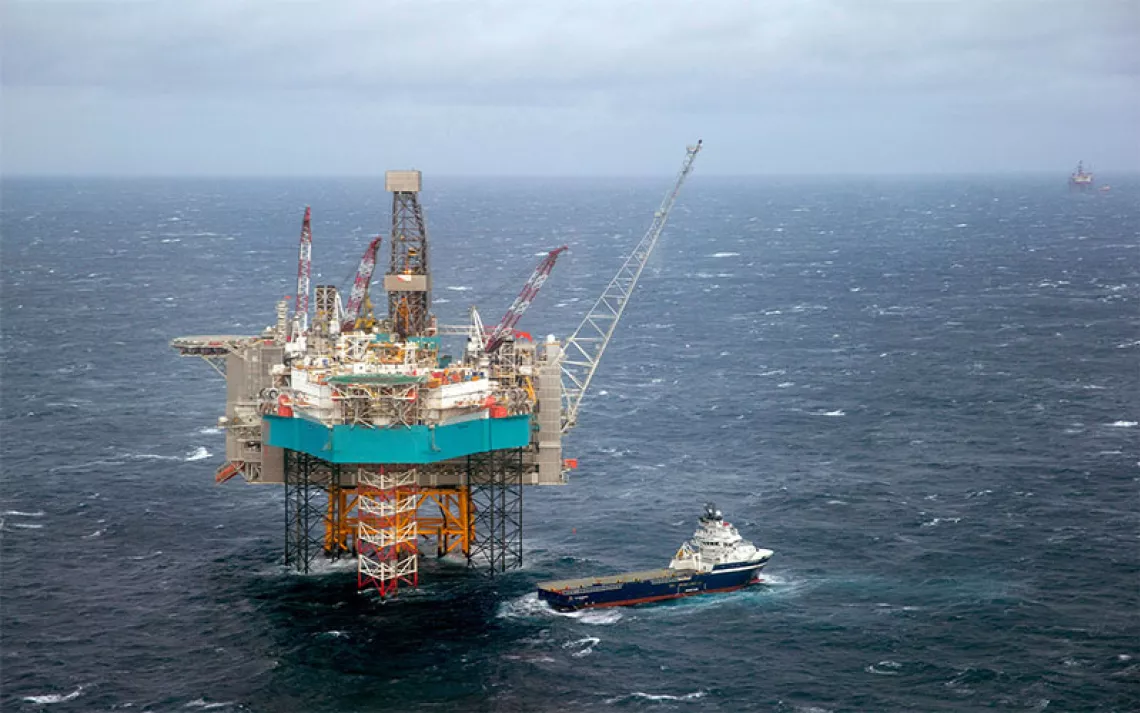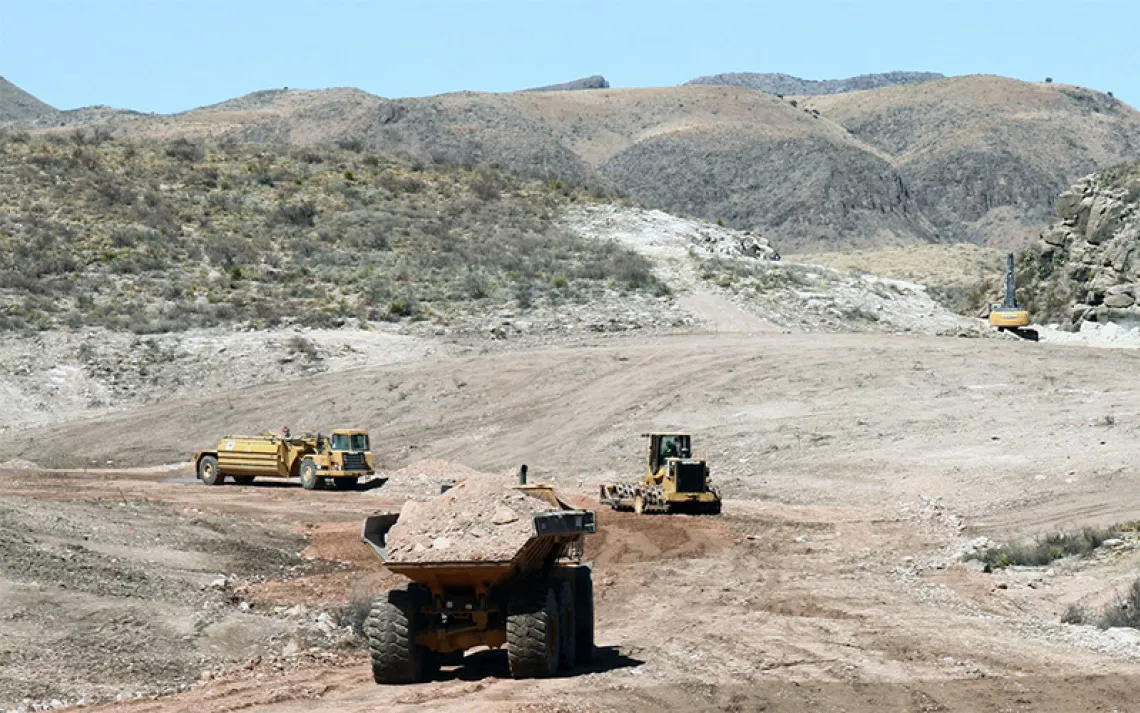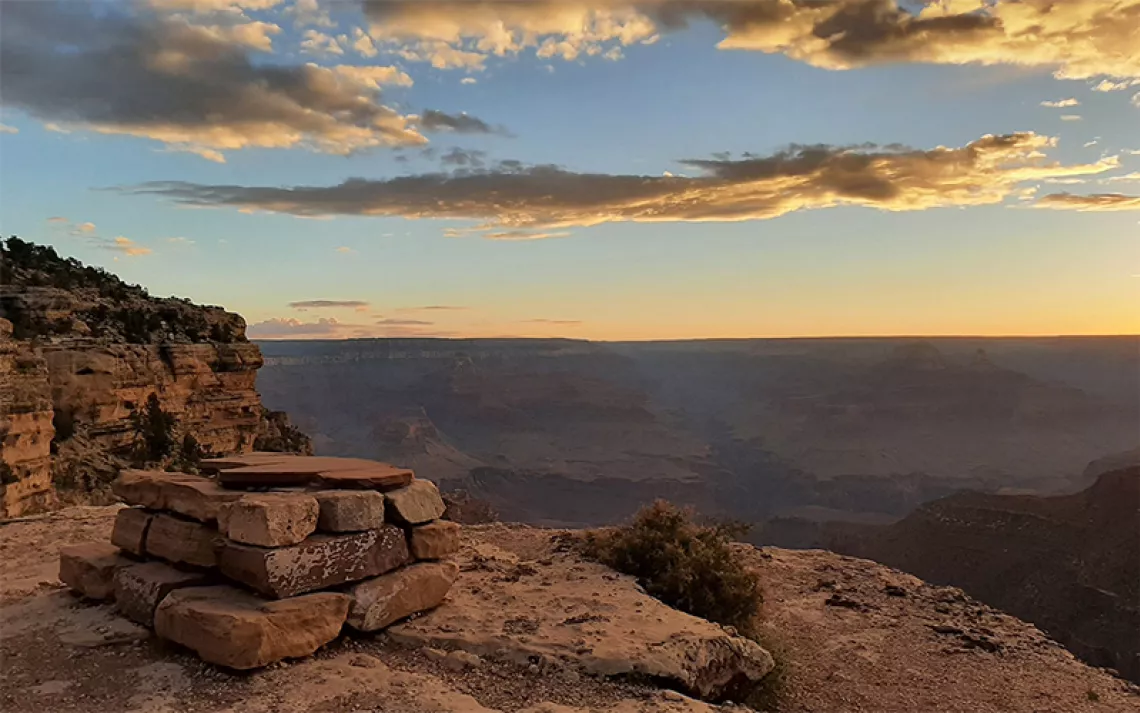A River Runs Through International Borders
Mining operations in Canada threaten rivers in the US

Photo by brytta/iStock
The Skagit River in northwest Washington is the last best ecologically functional place in the Puget Sound. It provides one-third of the freshwater flowing into the sound, generates electricity for millions of people, and hosts the most biodiverse array of aquatic and terrestrial species in the Pacific Northwest. The Skagit supports one of the last healthy salmon runs in the Lower 48, producing over half of the wild chinook that feed the endangered Southern Resident killer whales in the Salish Sea. “It’s a nexus for the aquatic and terrestrial worlds, and the fresh- and saltwater worlds,” says John McMillan, science director for Trout Unlimited’s Wild Steelhead Initiative. The Skagit’s waters are the very lifeblood of the Salish Sea region, which stretches from Olympia, Washington, to well north of Vancouver, British Columbia.
While the Skagit may be healthy and robust along most of its length in the United States, it now faces a threat coming from hundreds of miles away, from north of the US-Canada border. And therein lies a geopolitical problem for river conservation: Rivers don’t adhere to lines drawn on maps, and neither does toxic pollution leaked into them from industry.
In March 2019, the Vancouver, BC–based mining company Imperial Metals applied for a permit to begin exploration for gold in a region called the Donut Hole, an unprotected area surrounded by provincial parks at the headwaters of the Skagit River in British Columbia, about 140 miles northeast of its mouth. The prospect of a new mine at the Skagit headwaters—and the very real possibility that an industrial accident there could ruin the river’s health—has spurred US elected officials, tribal leaders, businesses, and environmental organizations to try to revive a century-old treaty that says neither Canada nor the United States can negatively affect shared watersheds to the detriment of people on the other side of the border. Last summer, all eight senators, from both parties, representing the border states of Washington, Idaho, Montana, and Alaska, signed a letter to BC premier John Horgan asking him for oversight and accountability in transboundary rivers.
“These transboundary watersheds support critical water supply, recreation opportunities, and wildlife habitat that support many livelihoods in local communities,” the letter stated. “We seek your direct engagement on these matters.” In a response to the US senators’ letter, Horgan said that the British Columbia mining industry is subject to “world-leading regulation and oversight.”
Many environmental groups and Canadian First Nations disagree with Horgan’s point of view. British Columbia was settled by Europeans during the gold rush era, and, when it comes to mining law, little has changed from the mid-1800s. Companies can still stake sub-surface rights almost anywhere without consent or consultation, regardless of what’s on the surface, be it First Nations’ territories, private land, river headwaters, or other sensitive ecological regions. Today, BC is home to more exploration mining companies than anywhere else in the world, and they’re subject to lax regulatory laws. A 2016 BC Auditors report of the province’s mining sector found that the Ministry of Energy and Mines “role to promote mining development is diametrically opposed to compliance and enforcement” to protect against environmental risk. Already, Canada has more mine tailings spills than any other country in the world except China. Without significant changes to current mining practices, BC can expect two tailings dam failures every 10 years.
Imperial Metals, whose geologists are focusing on the Skagit headwaters, is responsible for the worst mining disaster in Canadian history.
On August 14, 2014, a breach in the tailings dam at the Mount Polley copper and gold mine outside Likely, BC, dumped 25 million cubic meters of wastewater and tailings into Quesnel Lake, the headwaters of the Fraser River. The place is known as one of the birthing waters of salmon; it is the spawning waters for an estimated 25 percent of BC’s sockeye, and as much as 60 percent during peak years.
Nuskmata Jacinda Mack was the natural resources manager for the Secwepemc First Nations community of Xat’sull when the dam failed. “I just knew that things would never be the same again,” she said. “This is a special place. It’s where we get our medicines, where spiritual work happens. Imperial Metals dumping poison into our watershed like that. . . . It was so deep, so gutting. We had death ceremonies for it [Quesnel Lake].”
She knew from walking the dam site and reviewing permits that the company had no plan in place for handling such a disaster, let alone the mitigation of one. The 2018 salmon return was strong at over 10 million sockeye, but scientists from the Department of Fisheries and Oceans are still completing peer review of a paper on the long-term impacts to salmon health, and, due to legal issues with the Mount Polley mine, were not at liberty to comment. Afraid of heavy metal contamination, people have stopped eating the fish, a blow to the community’s food security. “It had a huge cultural impact,” Mack said. “People don’t spend time around the lake anymore, so place names aren’t being used. Kids aren’t using the trails. We’re losing our connection to the land.”
Imperial Metals was never fined, and surrounding communities received no compensation for the accident. The toxic tailings deposit sitting at the bottom of Quesnel Lake is estimated to be 600 meters long and a kilometer wide. A 2015 engineering report by an independent panel found the Mount Polley dam construction had failed to incorporate shifting layers of ground soil due to its location in a glaciated area. Imperial Metals did not respond to Sierra’s requests for comment.
Now, some people fear that, were Imperial Metals to excavate a mine at the headwaters of the Skagit, that river could be in similar jeopardy. The Skagit River is home to steelhead and all five species of salmon. While 27 native salmon runs in the Pacific Northwest are currently listed as endangered—and another 100-plus run have been functionally extinct for decades—the Skagit hosts the largest amount of all of these fish in Puget Sound. “We’ve been the stewards of the Skagit since time immemorial. We are known as the Salmon People,” said Joe Williams, vice chairman of the Swinomish Senate. The Swinomish Indian Tribal Community has been fighting the Imperial Metals permit since the company first sought one. “The river is instrumental in our cultural and economic and spiritual way of life. One of our biggest concerns is if we had a catastrophic tailings spill releasing toxics into the Skagit.”
Even if there isn’t a catastrophic mine tailing spill upstream, the Skagit could still suffer death by a thousand cuts from toxic leaching—a very real risk painfully demonstrated by what has happened to some of the last genetically pure westslope cutthroat trout on the planet, in Montana’s Kootenai River, another cross-border watershed.
Since the 1990s, Teck Resources’ coal mines outside Fernie, BC, have been leaching selenium into the Elk River, a tributary of the Kootenai. Measurements have found selenium levels far above the two parts per billion set forth in provincial guidelines, at 50 to 70 parts per billion, and as much as 100 in some cases. In fish, overexposure to selenium leads to facial and spinal deformities, missing fins and an absence of gill plates, deformities that are showing up in trout in the Kootenai. BC officials ordered Teck to develop a water quality management plan in 2013, but Teck has repeatedly exceeded limits; in the meantime, BC has issued the company permits to expand its mines on the Elk. One independent report warned that increases in selenium would lead to “a total population collapse” of westslope cutthroat.

Make every day an Earth Day
Get articles like this one sent directly to your inbox.
With this action you affirm you want to receive Sierra Club communications and may vote on policy designated by the Sierra Club Board.
“We view the Elk Valley as a poster child for BC regulatory policy gone wrong, if you need someplace to look for what you don’t want to happen in your transboundary watershed,” said University of Montana biologist Erin Sexton.
The Stikine River that flows from BC into Southeast Alaska is also threatened by cross-border pollution. In 2015, Imperial Metals began operations at the Red Chris Mine on the Stikine River—using the same tailings pond design as the Mount Polley mine, only 27 times bigger.
In 2019, American Rivers declared the Stikine, which has a productive and healthy salmon run and is beloved by boaters, one of the top 10 endangered rivers in the country due to threats from mining. The Stikine lies in a region of large-scale mines that the industry refers to as the "Golden Triangle” and which spans the Taku, Unuk, Stikine, and Nass watersheds. These are Southeast Alaska’s biggest salmon-producing rivers. “We’ve been trying to rebrand the Golden Triangle as the Salmon Coast,” said Jill Weitz, executive director of Salmon Beyond Borders, which works to defend transboundary rivers from pollution. Weitz is a coauthor, along with Sexton and 20 other science and policy experts, of a letter published in the journal Science in April urging US and Canadian leadership to address the risks and damages caused by BC mine waste flowing downstream across borders. “This letter highlights the inadequacies of British Columbia’s evaluation and permitting process for massive toxic waste dumps in major salmon-producing transboundary rivers, like the Taku, Stikine-Iskut, and Unuk-Nass river systems,” Weitz said. “BC's mine assessment process leaves Alaskans unprotected because it underestimates the risk of mine failures and contamination and doesn’t rely on independent science.”
The weight of all of these threats has spurred a rare bipartisan environmental effort from the Western border state senators. “As you know, Alaska, Washington, Idaho, and Montana have tremendous natural resources that need to be protected against impacts from BC hard rock and coal mining activities near the headwaters of shared rivers,” stated the June 2019 letter to Premier Horgan. At the same time, US environmental groups, businesses, politicians, tribes, and government agencies are pushing for action under the 1909 Boundary Waters Treaty. That treaty created a regulatory body, the International Joint Commission, which has been active on transboundary issues on shared waterways that connect Ontario and Quebec to US states around the Great Lakes and in New England. The Canadian federal government needs permission from the provincial BC government to allow the IJC to adjudicate these pollution issues in the West—a green light that’s thus far been withheld. BC has memorandums of understanding in place with Alaska and Montana “that suggest [the province has] it under control and the federal Canadian government doesn’t need to engage,” Weitz said. “But we’re doing our best to expose that those MOUs are nonbinding and nonfunded, and the last line in the MOU is that either party may remove itself at any point in time.”
The Skagit River has one last hope, though. The 1984 High Ross Treaty, in which Seattle agreed not to raise the Ross Dam on the Skagit and send floodwaters into BC, also created the Skagit Environmental Endowment Commission (SEEC) to conserve the watershed—including acquiring lingering mining and timber rights to protect the land. In a positive sign that took place in December, the BC government ordered a halt to logging in the Donut Hole that would have created roads for Imperial Metals’ exploration there. The move bought SEEC time to try to purchase the mineral claims that Imperial Metals currently owns in the hope of extinguishing the threat to mining the Skagit’s headwaters once and for all. The SEEC is currently waiting on a purchase estimate from Imperial Metals as an opening framework for making an offer on the mining claims.
“Our people have always told us that we have to think seven generations down in all the decisions we’re making,” Williams said. “That’s why we prioritize our environmental restoration and protection. There is definitely a sense of urgency here.”
 The Magazine of The Sierra Club
The Magazine of The Sierra Club



